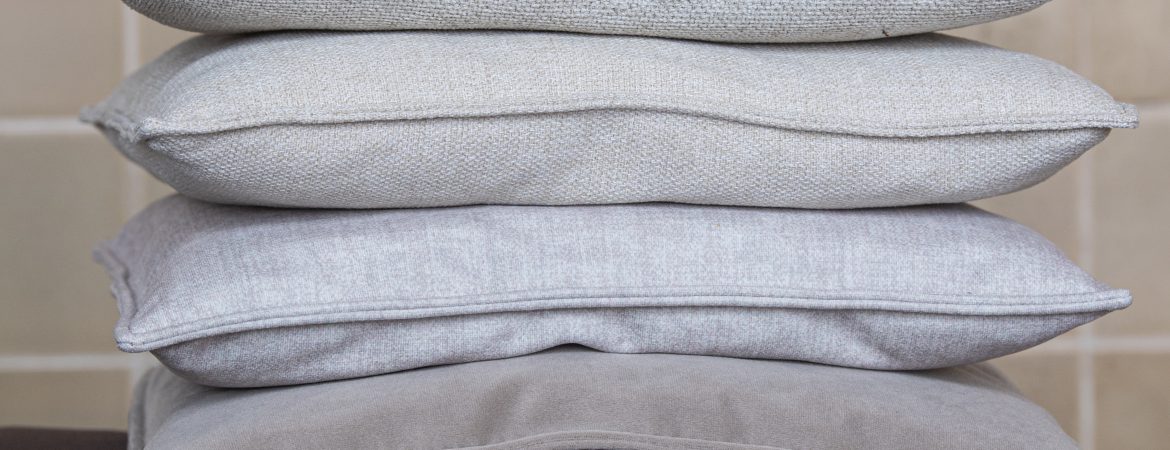
Sustainable furniture fabrics conquer modern interiors
Sustainable furniture fabrics are a crucial component of modern interiors. The textile industry exerts a significant environmental impact, from the consumption of natural resources to waste production. By utilizing sustainable materials in the production of upholstery fabrics, the environmental footprint can be reduced, and natural resources can be preserved. Recognizing the importance of impact reduction is crucial. In fact, European textile consumption ranks as the fourth largest contributor to environmental impact and climate change, following food, housing, and transportation.
Shift towards sustainable furniture fabrics for a circular textile industry
To mitigate both environmental and health risks, the focus is increasingly shifting towards recycled materials. By incorporating recycled materials, furniture companies can meet consumer demands and differentiate themselves from competitors. Moreover, companies in the furniture industry are facing increasing regulations from governmental authorities. Governments are imposing stricter rules to reduce the environmental impact of business activities. The use of recycled raw materials can help comply with these regulations, preventing companies from facing fines or damaging their reputation. The shift in the furniture industry represents a significant step towards a more sustainable and circular future. However, achieving this transformation requires collaboration and efforts from both manufacturers and consumers.
The significance of reuse for sustainable furniture fabrics
The reuse of materials is becoming increasingly crucial in upholstery fabrics. The demand for sustainable furniture is on the rise as more consumers express concern about the environmental and health impact of their purchases. Here are some benefits of recycled materials in upholstery fabrics:
- Reduction of waste
- Energy savings
- Reduced use of natural resources
- Decreased water consumption
- Promotion of the circular economy
- Market advantage and consumer preference
Recycled textiles create sustainable furniture and contribute to the circular textile industry. The use of recycled materials in upholstery fabrics offers numerous advantages for transitioning to a circular economy. A circular economy promotes sustainability and environmental protection by optimizing resource use, reducing waste, and limiting greenhouse gas emissions. It fosters innovation and new business models, enabling the industry to adapt to changing market demands and create new value. Moreover, the transition to a circular economy yields social benefits, including job creation and providing affordable sustainable options for consumers. It also contributes to global sustainability goals, such as climate action and responsible consumption and production.
In summary, the shift towards a circular economy is essential for the furniture industry to become more sustainable, resilient, and aligned with global sustainability objectives.
Regulations in the furniture industry
The production of furniture fabrics, from raw material to end product, is a complex and chemically intensive process. Therefore, FABRAA is committed to developing and implementing responsible chemical management procedures throughout the supply chain and for all production processes and product components, including packaging materials.
PFAS
PFAS (per- and polyfluoroalkyl substances) are synthetic chemicals widely used for their water-repellent and heat-resistant properties. However, they persist in the environment and accumulate in soil, water, and living organisms. Some PFAS are associated with health risks, including harmful effects on organs and developmental issues. Consequently, regulatory agencies worldwide have taken measures to restrict the use and distribution of PFAS. There is a growing demand for alternative chemicals and sustainable production methods to reduce the impact of PFAS. Addressing PFAS contamination requires a collective effort to decrease their usage and find effective solutions for treating PFAS in the environment.
OEKO-TEX
The OEKO-TEX certification program is a globally recognized label for textile products, demonstrating that the product has been tested for harmful substances and is safe for human use. The Oeko-Tex Standard 100 certificate sets limits on the content of harmful substances in textiles, ensuring certified products are free from harmful chemicals. This provides consumers with peace of mind and confidence in the safety and quality of textile products. The certification covers all stages of textile production, from raw materials to end products, offering a comprehensive approach to safety and sustainability in the textile industry. The OEKO-TEX label is a valuable tool for consumers to make informed and healthy choices when purchasing textiles.
REACH
The REACH regulation is a European legislation that regulates the safe production, use, and trade of chemicals within the European Union. It requires manufacturers, importers, and users of chemicals to provide information about their properties and risks. The goal of REACH is to ensure the safety of human health and the environment by controlling chemical risks. In the furniture industry, REACH is relevant because it imposes requirements on the chemicals used in furniture fabrics to ensure their safety for use.
It is essential for furniture companies to be aware of these regulations concerning harmful substances and strive to use recycled textiles for sustainable furniture.